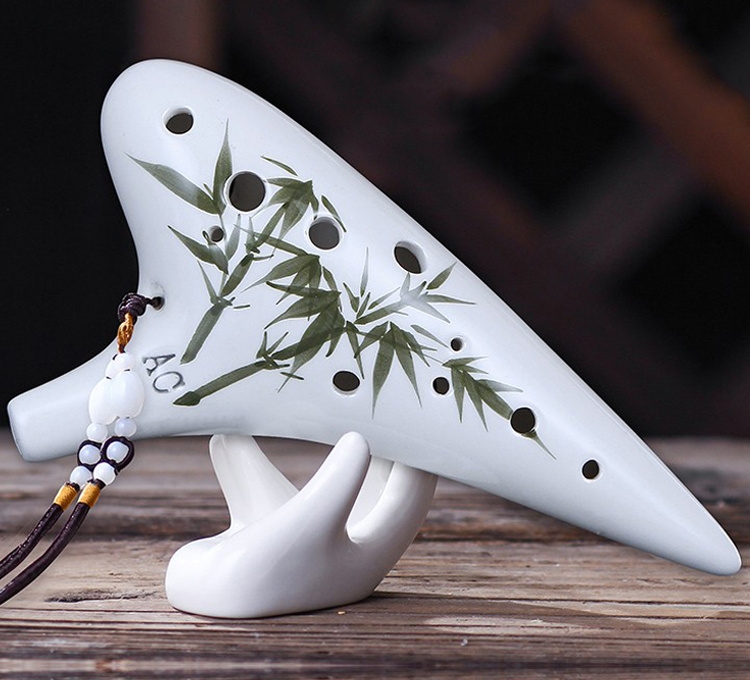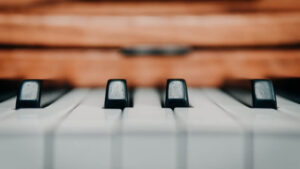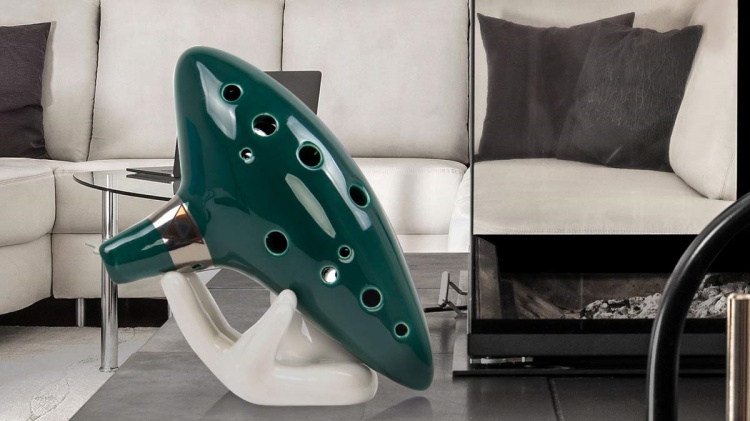
Exploring the Mystical Sounds: The World of the Ocarina
The ocarina is an ancient wind instrument known for its otherworldly and evocative sound. With a history spanning over 12,000 years across cultures worldwide, the

The ocarina, a haunting wind instrument played by blowing into a small ceramic or wooden whistle, has captivated cultures across the globe for over 12,000 years. This mystical music maker has appeared not just in ancient civilizations but also in some of the most iconic books, movies, TV shows, and video games in pop culture history.
In this deep dive, we’ll explore the ocarina’s surprising journey from the ancient Mayans and Aztecs through modern pop culture, and how this humble instrument has lodged itself firmly into the public consciousness.

The ocarina has been enthralling people since ancient times with its sweet flute-like tones. Early forms of the ocarina first appeared in ancient Mesoamerica and South America over 10,000 years ago, crafted by indigenous cultures including:
The Mayans created simple ceramic ocarinas and even used them in religious ceremonies and rituals. Mayan pottery ocarinas dating back to 900 BCE have been uncovered by archeologists.
This Mesoamerican empire played clay double and triple chamber ocarinas expertly molded into the shapes of birds, frogs, and other animals. The Aztecs believed the ocarina possessed mystical qualities.
The ancient Incan empire stretched ocarina music throughout South America. Incan double and triple ocarinas made of terra cotta have been unearthed by researchers.
For these ancient cultures, the ocarina was much more than a musical instrument – it was an object of spiritual significance.
The Ocarina slowly spread its way along trade routes like the Silk Road from Mesoamerica, eventually reaching cultures in Asia:
Chinese clay transverse and inline ocarinas dating back to the 8th century Tang Dynasty have been discovered. Chinese ocarinas were traditionally glazed in rich cobalt blues.
Koreans have long-crafted small bamboo ocarinas called hun for folk music. The hun produces a breathy, ethereal timbre unique to its bamboo construction.
While not as old as other Asian ocarina traditions, Japan has made the transverse style ocarina its own with tranquil glazed ceramic transverse gemshorns.
The ocarina’s global reach expanded greatly as travelers carried their music across continents.
While ocarinas were known in Europe during Medieval times, they exploded in popularity in the 1800s thanks to the stellar craftsmanship of Italian luthier Giuseppe Donati:
Working in Budrio, Italy in the 1850s, Donati elevated the humble ocarina to new heights by perfecting a fully chromatic multi-chamber ocarina capable of playing an expansive musical range. His technical brilliance turned the ocarina into a respected concert instrument.
Influenced by Donati, composers like Antonín Dvořák began featuring the ocarina in Romantic era orchestral pieces, most notably in his opera Rusalka. This further exposed the ocarina’s enchanting voice.
Thanks to Donati’s innovations, 19th-century families embraced the affordable and accessible ocarina for amateur home music making. Sheet music for ocarina sold briskly and the instrument gained mass appeal.
The 19th century marked the ocarina’s introduction onto the European musical scene in a major way.

The ocarina’s whimsical sound made it a perfect fit for fantasy tales for children. Some of its earliest and most famous appearances in children’s pop culture works include:
In this 1937 novel, the character Thorin Oakenshield plays a small six-hole wooden ocarina he carries in his pocket throughout his quest. Tolkien’s mention helped the ocarina find literary fame.
In the 1939 classic family film, Margaret Hamilton as the Wicked Witch of the West threateningly produces an ocarina from within the folds of her robe in dramatic fashion.
In this 1938 Newbery Honor-winning children’s book, the character Mr. Popper plays folk tunes on the ocarina to soothe and entertain his growing flock of pet penguins.
Thanks to these works and more, the ocarina sound became synonymous with magic, whimsy and fantasy for generations of readers and moviegoers.
As mass media blossomed in the early 1900s, the ocarina sound spread even farther through new radio programs and talkies:
This popular 1930s comedy duo featured the ocarina in various vaudeville-style sketches on their radio program. America was now laughing at the ocarina!
In this 1938 Frank Capra film starring Jimmy Stewart, Lionel Barrymore’s character Grandpa Vanderhof plays the ocarina in comedic scenes, exposing it to film audiences.
Comedian Red Skelton showcased the ocarina on his iconic variety television series in the 40s and 50s. His wacky persona played well off the humble instrument.
Newfound mass media provided a huge platform to bring ocarina music into households everywhere.
Beyond books and movies, the ocarina found its way onto television screens through clever showrunners who realized the ocarina perfectly complemented mysterious or lighthearted themes:
In multiple episodes of this 1990s sci-fi drama, Special Agent Fox Mulder eerily plays his vintage ocarina, befitting The X-Files unusual paranormal plots.
The time-traveling character of the 4th Doctor occasionally whipped out an ocarina from his overcoat and trilled a couple of mystical notes on this quirky British sci-fi program.
In the Season 4 episode “The Best of Both Worlds“, Captain Picard hauntingly performs a few notes on the Ressikan flute, prominently featured as an ancient-looking ocarina.
Through cameos in hit shows, the ocarina soundtracked many memorable TV moments.
No discussion of the ocarina in pop culture is complete without its starring role in one of the most popular video game series of all time:
Ever since Link first twittered the iconic opening notes of Zelda’s Lullaby on the ocarina in 1986’s The Legend of Zelda game for NES, the ocarina became etched permanently into gaming history. The ocarina remains an integral gameplay element and symbol across many games in the storied Zelda franchise.
Nintendo sold over 2.5 million plastic Legend of Zelda-themed ocarina as a toy after Ocarina of Time’s 1998 release. For Generation X and Millennials, the ocarina is practically synonymous with Zelda in pop culture.
The ocarina has appeared in numerous other classic games like Secret of Mana, Golden Sun, and Ni No Kuni as an item or even a playable instrument. Its sweet sound just fits video game worldbuilding so well!
Thanks greatly to its prominence in games like Zelda, the ocarina has inspired a whole new generation of musicians. Contemporary ocarina artists are proving their versatility in genres from pop and rock to hip-hop and EDM:
Ocarina maker STL has collaborated with artists like Kasey Musgraves and Pentatonix to craft one-of-a-kind ocarinas for their live performances. A far cry from just a fantasy game novelty.
DJs have remixed the serene “Song of Storms” from Zelda as raging dubstep and EDM anthems, showing the ocarina crosses musical boundaries.
YouTuber Smooth McGroove has racked up millions of views with his multi-track ocarina covers of pop hits from Michael Jackson to Post Malone.
In the new millennium, musicians are reinventing the ocarina as a dynamic contemporary instrument. The future is bright for the ocarina in pop culture.
While still used charmingly for its retro appeal, today’s virtuoso ocarina musicians are pushing the instrument into thrilling new territory:

The internet has fostered a thriving global community of ocarina enthusiasts:
By sharing knowledge and passion, ocarina lovers worldwide are keeping this historic little instrument cherished.
For over 10,000 years, the unique mystique of the ocarina has proven captivating. After humble roots in ancient civilizations, this unlikely instrument went on to achieve popularity around the globe thanks to innovators like Giuseppe Donati and later appearances in some of the most beloved books, movies, TV shows, and video games ever created.
Today, a new generation is discovering the magic of the ocarina and propelling it into the musical mainstream more than ever. This little ceramic wind instrument has had an outsized impact on pop culture for eons – and with musicians continuously exploring the ocarina’s possibilities, its unlikely success story is far from over. The ocarina’s future looks bright and full of beautiful new melodies.


The ocarina is an ancient wind instrument known for its otherworldly and evocative sound. With a history spanning over 12,000 years across cultures worldwide, the

When it comes to taking care of your musical instruments, ocarina requires special attention, especially in terms of disinfection. Whether you’re a professional musician or

When it comes to preserving the charm and sound of your ocarina, storage is key. Just like a treasured book or a fine wine, your

The world of music is filled with diverse and captivating instruments, and among them, the ceramic ocarina stands as a unique and charming creation. With

The ocarina is an ancient wind instrument known for its otherworldly and evocative sound. With a history spanning over 12,000 years across cultures worldwide, the

When it comes to taking care of your musical instruments, ocarina requires special attention, especially in terms of disinfection. Whether you’re a professional musician or

When it comes to preserving the charm and sound of your ocarina, storage is key. Just like a treasured book or a fine wine, your

The world of music is filled with diverse and captivating instruments, and among them, the ceramic ocarina stands as a unique and charming creation. With
Copyright © 2024 echofluteocarinas. All Rights Reserved.